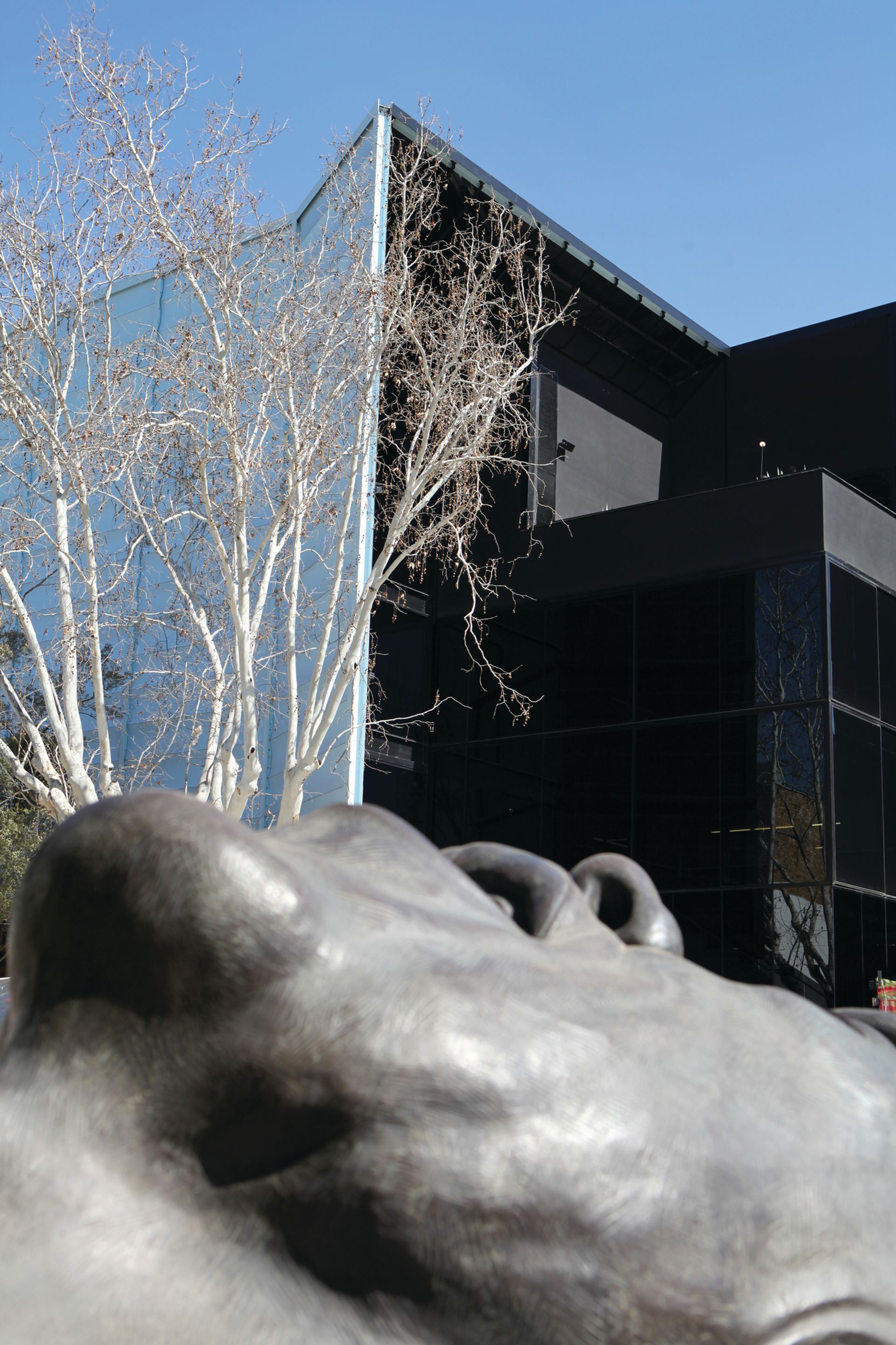A new arts district, the Keyes Art Mile, is taking shape in Johannesburg. This month, the businessman Anton Taljaard will unveil the first completed building in his redevelopment of a two-block area of Rosebank, a leafy residential neighbourhood in the centre of the city, which is already home to contemporary art galleries such as Everard Read and Circa.

The Trumpet building, an office block built in the 1980s, has been revamped and turned into a mixed-use space with restaurants, high-end design shops, a private members’ club and a first-floor bar with views over the city. It will also house Johannesburg outposts for the Cape Town contemporary art galleries Smac and Whatiftheworld; the latter is sharing its space with the design gallery Southern Guild.
The building’s soaring entrance hall will host exhibitions, site-specific commissions and other projects, starting with an exhibition by the Kenya-born, New York-based artist Wangechi Mutu, which will open there after being on view at the Joburg Art Fair (9-11 September).
The organisers want to use the hall to create a platform for artists and curators: “We’re extremely open to ideas,” says Taljaard. He plans to tap into a network of art world friends that he’s made through collecting Modern and contemporary South African art. “If there is a curator who has a really great idea, they should approach us.”
Taljaard plans more art spaces as he develops the Keyes Avenue area with a R1bn ($74m) investment from his property development company, which he runs with Estelle van Kerckhoven. “We want to infuse the entire neighbourhood with art and design,” he says.
Across the street from the Trumpet building, a lot that now sits empty will eventually house apartments and a contemporary art gallery. Construction should start in two to three years and Taljaard hopes to complete the gallery in four or five. “It won’t be huge but we want to ensure that it can host proper exhibitions, including visiting shows.”
Taljaard says that one idea is to use the space as a Johannesburg outpost for the Zeitz Museum of Contemporary Art Africa (Zeitz MoCAA), which is currently under construction in Cape Town and due to open in September 2017. The museum will show art collected by the former Puma chief executive Jochen Zeitz as well as temporary exhibitions. Zeitz MoCAA “will need to have a presence in Johannesburg, so in time maybe we can deliver that”, says Taljaard, who is a Zeitz MoCAA trustee. Zeitz MoCAA declined to comment.
Taljaard, who co-founded and co-manages the Bright Group, an investment firm, started buying properties in Rosebank six years ago. He has spent the past few years working with Johannesburg Council on the precinct plan for Rosebank. “This development will create a backbone for the area so that when other people step in and develop their own projects they will have to respect the precinct plan guidelines.” These guidelines envision vibrant, tree-lined streets with plenty of retail, dining and art spaces.
One person who has bought into this vision is Marelize van Zyl, the associate director of Smac gallery, which has spaces in Stellenbosch and Cape Town and is opening an outpost in the Trumpet building. “It is clear that the Trumpet is aimed towards ‘destination shopping’, with a carefully selected group of restaurants, cafés, design retail spaces and galleries in the development. Here, the gallery will operate at the centre of an art buying market in Johannesburg.”
Despite the city’s legacy of apartheid and racial inequality—which led to extreme violence, particularly in the 1990s—people are optimistic about its future. Van Zyl says there is “a tangible air of enthusiasm about the city—now considered one of the art cities of the future (according to the art publisher Phaidon)—and we want to be part of it”.
In a country with scant state funding for contemporary art, Taljaard believes that hybrid developments such as this one will enable art and artists to flourish. “I don’t believe in handouts for the arts,” he says. “I believe in creating an engine to make them sustainable. If I were to disappear and this development were to get taken over by someone else, maybe the next guy will have no personal interest in art but he will realise it draws people in and so it makes good financial sense to keep it.”

